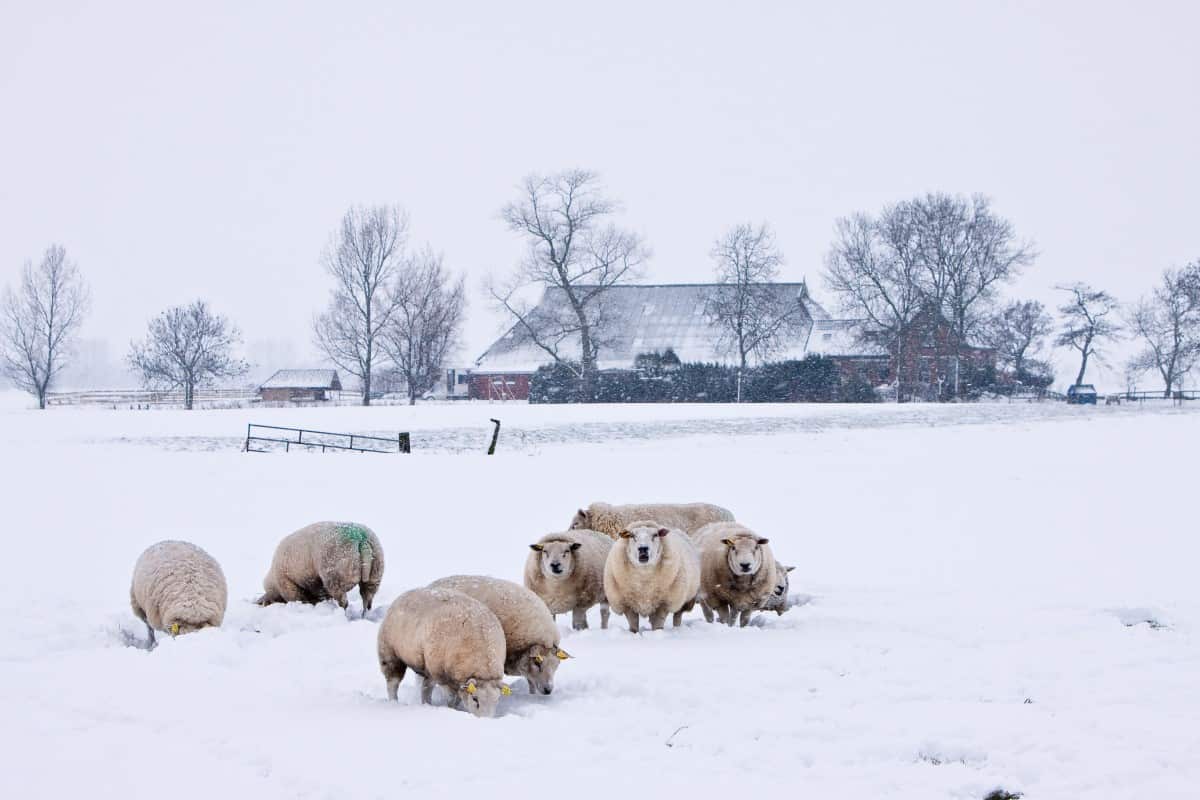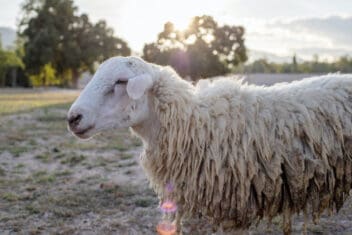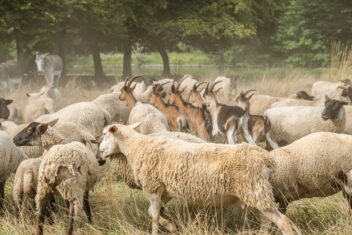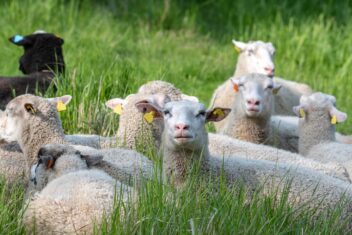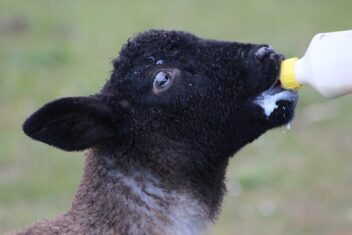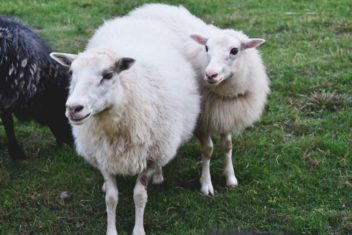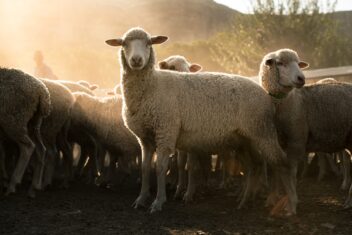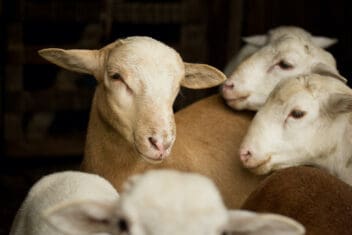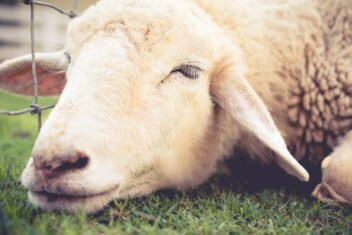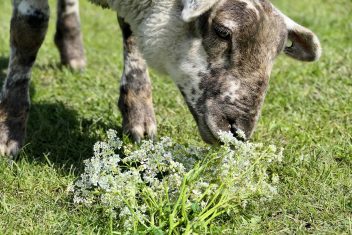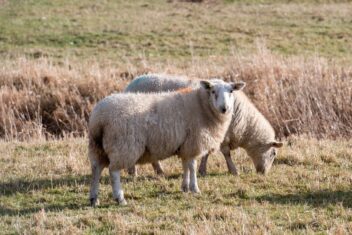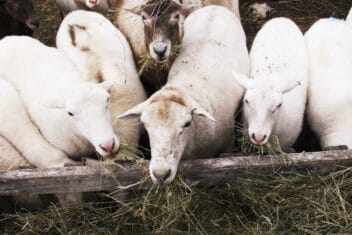Whether fall has just barely started to yellow the leaves in your area or you’re wondering how you’ll continue to care for your sheep as the snow keeps falling down, you’ve come to the right place.
When it comes to farming in the winter, sheep are some of the easiest livestock you can raise. After all, they come with their own built-in insulation systems! There isn’t much that you need to do to care for sheep in the winter.
However self-sufficient they may be, though, there are some basic considerations you will need to make. Here are some tips.
Can Sheep Tolerate Cold Weather?
Sheep are some of the hardiest animals you can raise in cold weather. Take it from me – where I live, winter temperatures regularly dip into the sub-zero territory. It is not uncommon to have a stretch of cold weather in which temperatures range between -20 to -40°F (often with a windchill).
Although it usually doesn’t stay this cold all winter, it’s cold enough, to say the least! Our sheep barely bat an eye. In fact, the first year we raised our small flock of five sheep, we had a hard time convincing them to go inside the barn when it was that cold. Most of the time, they preferred to stay outside (even when it was sleeting or snowing).
Sheep more than tolerate cold weather – they seem to enjoy it. However, there are plenty of steps you should be taking to protect them from rain, ice, snow, and bitter cold. While sheep do just fine when left to their own devices in the winter, you can reduce the likelihood of injury and illness (particularly at lambing time) by making sure they are well taken care of.
How to Care for Sheep in the Winter
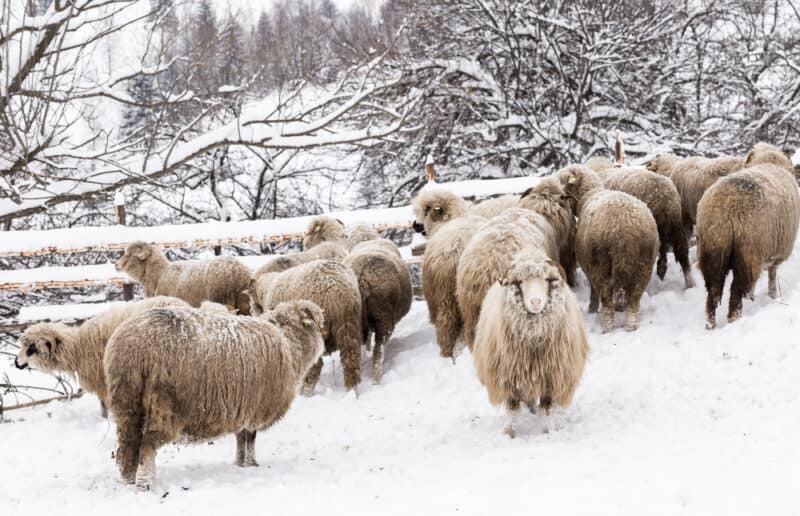
1. Keep Them Well Fed
This sounds like a bit of a no-brainer, doesn’t it? You might be thinking, “Well, sure. I feed my sheep all the time – they never go hungry.”
However, it’s important to remember that during the winter months, sheep need to eat a lot more food to maintain their body temperature. Sure, they have wool to insulate them, and that helps. Wool can help trap heat that their small bodies emit.
When there isn’t enough heat being produced through digestion and physical activity, though, there won’t be heat to be trapped. You will need to make sure your sheep are eating a bit more as they require more calories during cold weather.
This is something that is true of all livestock, but it’s doubly true for sheep. This is because sheep are rumen-based animals. They need activity in their rumens to produce enough body heat to stay warm.
Make sure you continue to provide your sheep with a healthy, varied diet of hay or forage, grain, and a mineral supplement throughout the winter months.
2. Plenty of Warm Water
Clean, fresh drinking water is something that sheep should always have access to, but it’s especially important during the winter. Remember that as the weather cools, so will the water. You may need to install a heater in your watering trough or position it in a location where it is less likely to freeze.
Even if the water stays open, you might find that your animals drink less if it is freezing cold. This can cause them to eat less, compounding the issue mentioned above. It can also lead to weight loss which is detrimental if you are raising pregnant animals, sheep for meat, or dealing with any medical issues in the flock.
Keep the water warm and remove ice as frequently as possible. Again, heaters for the watering trough work well, but you may also need to physically break up the ice several times a day, too.
There are some sheep farmers who simply allow their sheep to eat snow during the winter months. This reduces their chores substantially, as they don’t need to refill the water trough and break up ice every day.
I would caution against this – yes, the sheep will eat snow when they get thirsty. However, remember that it will take more energy to digest that ice-cold snow than it will lukewarm water.
3. Remove Ice
Just as you need to remove ice in the water, you will also need to be attentive when it comes to ice in other areas of the sheep paddock, too. Assume that your sheep can’t break any ice that forms on them or around them. Take time to make sure sheep don’t have ice build up in their wool. It usually melts, but left there for too long, it can cause damage to their skin and hooves.
You should also do your best to remove ice in any outside areas that your sheep will be exposed to. It’s unsafe for you to be walking around on that ice when you care for your sheep, but it’s also unsafe for them. Sheep have a better balance than we do when walking on the ice but they can still trip and fall.
Break up the ice and put down sand (avoid salt) to prevent ice from forming and making a mess.
4. Increase Hoof Care
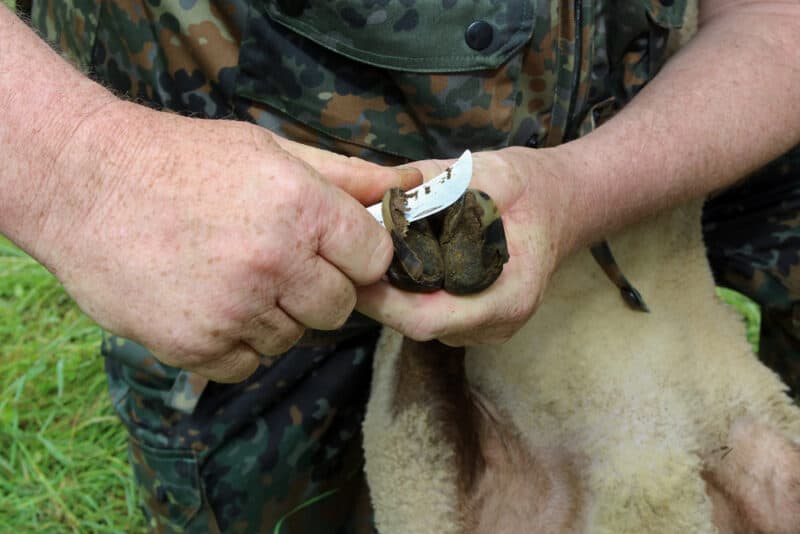
Hoof care is important throughout the year, but especially during the winter. Your sheep are more likely to suffer from overgrown hooves or damage caused by ice and other fragments as they walkabout. Be sure to trim their hooves every two months, especially during the winter season.
5. Keep Them Dry
As I mentioned before, it’s important that you provide adequate shelter during inclement weather. However, don’t expect your sheep to take to it automatically. You may have to coax them into the barn at night.
The wool on your sheep will help to keep them dry, but it won’t be quite as helpful in a driving snowstorm or torrential downpour. Use some grain to tempt them into the barn when bad weather is expected.
At the same time, don’t keep them locked in the barn all winter. This can lead to issues with fighting, parasites, and disease. Plus, a little bit of exercise never hurt anyone, even on the crispest days of winter. Let them outside when it’s dry, which will help ventilate out the barn and let them stretch their legs.
Shelter Precautions for Sheep in the Winter
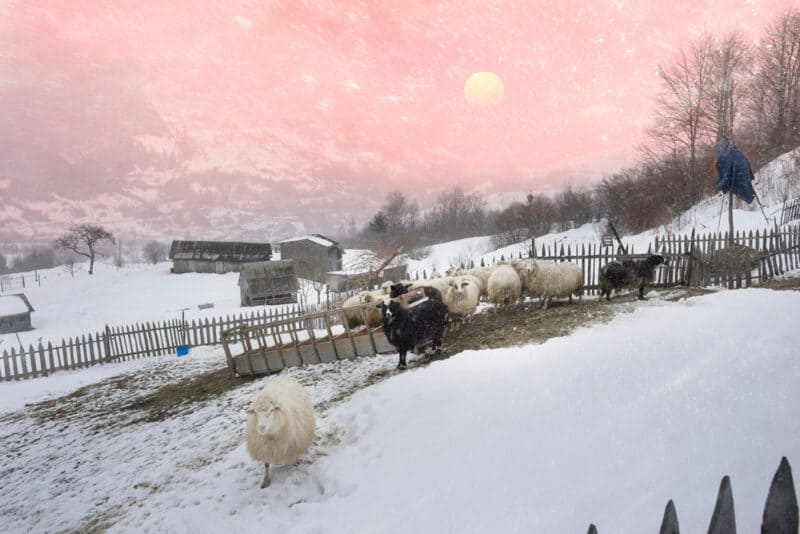
1. Provide a Windbreak
Depending on your climate, your winters may not be severe enough to warrant building a full-blown barn or shelter. If all you get is a few days of sub-freezing temperatures and a bit of rain or mild snow, a 3-sided shelter is more than adequate. Just make sure they have somewhere to get out of precipitation.
You will also have to make sure they have some sort of windbreak. This can be as simple as a line of trees, but a windbreak will give your sheep a place to hunker down during a bad storm.
2. Don’t Lock Them Up All Day
I’ve said it once, but I’ll say it again – don’t lock your sheep up all day. Not only will they go stir crazy, but you’ll go stir crazy, too – after all, that’s a lot more poop you’re going to have to shovel.
3. Use Good Bedding
Keep your sheep’s sleeping quarters filled to the brim with plenty of fresh, clean bedding. The barn might not get quite as stinky in cold weather as it will in hot. Plus, with no flies to contend with, it’s easy to forget that the barn needs to even be cleaned.
However, it’s important that you take the time to clean the barn and replace it with fresh bedding as often as possible. Your sheep can still get sick from respiratory and parasitic diseases in the winter, just as they can in the summer. Keeping the living quarters clean is essential for good health.
4. Heat Lamps?
Many people wonder whether it makes sense to hang heat lamps or install space heaters in the barn during cold weather. This is a question that is asked as it relates to other species of livestock, too, like pigs and chickens.
Almost always, I don’t recommend using heat lamps. There are some isolated circumstances in which using a heat lamp is necessary (for example, if you are farrowing piglets in the winter), but 9 times out of 10, a heat lamp is going to be more of a hazard than a help.
Heat lamps, particularly when mounted in a straw-bedded barn, are a very common cause of fires. In fact, supplemental heat (along with electrical or wiring issues) is the most common cause of barn fires. Don’t use a heat lamp. Not only do your sheep not need it, but you are increasing the risk tenfold.
5. If You’re Comfortable, They Aren’t
A good rule of thumb that I like to follow has to do with my own comfort levels. If I can work in the barn comfortably without a coat, it is too hot for sheep. I should have to bundle up, at least a little bit.
Remember, sheep have coats on 24/7 – use your own comfort level to gauge whether the barn is an appropriate level for your animals.
6. Ventilation is Key
As with raising any kind of animal throughout the winter months, good ventilation is key. Make sure your barn is well-ventilated with louvers, vents, windows, or even a door that’s cracked open for a few hours a day.
Animals that are housed indoors for a lengthy period of time are much more likely to develop respiratory problems as ammonia and moisture build-up. It only takes one sheep getting sick to get the rest of them sick. Keep things ventilated to keep your flock healthy.
Sheep Are Winter Hardy – With One Exception
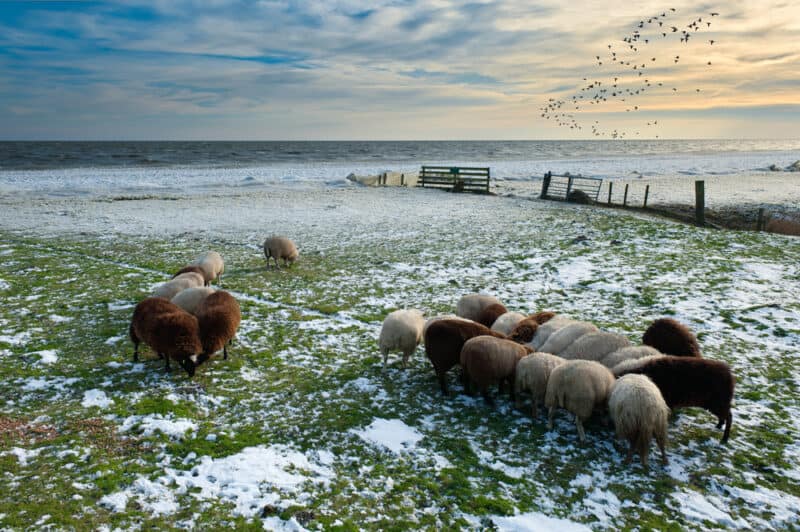
For the most part, sheep are self-sufficient and do extraordinarily well in winter weather. However, there is one notable exception when you will need to be extra vigilant about caring for your sheep in the winter.
When your sheep are lambing – or have recently lambed – you will need to take extra steps to keep the little ones warm. Usually, that just means making sure lambing ewes are kept in the barn with their young for 2 or 3 weeks. This will allow the young ones to dry off and nurse before being exposed to the outdoor temperatures (and to get a bit more fat on their bones, too).
Otherwise, take the steps listed above to care for your sheep in winter. There are minimal preparations needed as long as you are attentive to the health and comfort of your animals.
